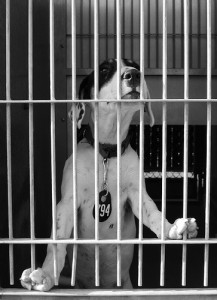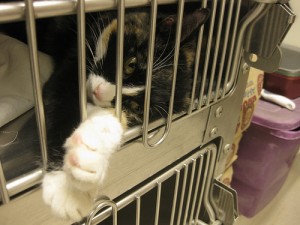Top 12 Friendliest Dogs
April 24, 2009 by LaBecs
Filed under Friendliest Dogs
When you decide to bring a new dog into your life, it helps to know its temperament, what’s the breed’s normal behavior, what are its characteristics, etc. Some dogs are great for kids, when some others are better suited for athletic grown ups, and yet others are better with elderly people. But, which breeds make the friendliest dogs? Some breeds are friendlier by nature than others, that’s not to say that a dog’s temperament cannot be greatly dependent on the owner’s behavior and lifestyle. It also doesn’t mean that if the breed tends to be friendly, it’s automatically an appropriate breed for all people. To help you do your homework, here’s a list of the top 12 friendliest dogs around.
Click on the pictures to learn more!
 #12 #12Brittany Spaniel |
 #11 #11Japanese Chin |
||||||||
 #10 #10Vizla |
 #9 #9Springer Spaniel |
||||||||
 #8 #8Cavalier King Charles |
 #7 #7Papillon |
||||||||
|
|||||||||
CLICK HERE TO SEE THE FRIENDLIEST CATS…
Photo credits:
Neutering or Spaying Your New Dog
March 24, 2009 by LaBecs
Filed under Neutering or Spaying Your New Dog
If you are having doubts about neutering or spaying your new dog, you have to consider the benefits for his or her health and for both your lives.
Male dogs are not “manly” and female dogs do not “need” to have puppies.
There are people (usually men… no offense, guys) that actually think that keeping their dog’s testicles intact is manly, both for the dog and for the owner… sometimes, people go as far as to have prosthetic testicles inserted for their neutered dogs. To each it’s own, but… really?
Also, breeding a dog is not necessarily better for the animal, neither male nor female, and it certainly can make dogs much more difficult to manage if they are not neutered.
Unless there is a specific reason to breed your dog, it should be neutered or spayed at an early age to prevent pregnancies, avoid aggressive male behavior, and even lessening the possibilities of some forms of cancer.
It’s normally recommended that the dog gets neutered between 2 and 6 months old. Of course, there is always a small risk associated with any sort of surgery, but it’s riskier to own a dog with an aggressive sex drive. Another reason to do it early, is that younger pups manage through the surgery option much better than older dogs. The surgery is very simple and can be performed in a matter of minutes.
Now, let’s clarify some myths:
Early neutering or spaying does not stunt growth. That’s a myth propagated by breeders and others who don’t want to spay their animals.
Your dog will not get fat and lazy after being spayed or neutered unless you feed him/her too much.
What happens if your male dog is not neutered?
-They will pee on everything they find on their way: furniture, curtains, shoes, clothes, walls… you get the idea.
-Dogs might be aggressive to other dogs and also hump even other male dogs. Just this fact should give you an idea of what kind of aggression can develop in those circumstances, besides, it’s very embarrassing.
-Even dogs that normally have the most wonderful temperament, can get aggressive towards humans and other dogs. A male will actually attempt to kill any male who he thinks will mate a bitch near him.
Don’t be kind to your dog by “letting try it out at least once”. Once a dog has actually had sex, his behavior can be magnified significantly when coming in contact with fertile bitches.
When a male dog is after a fertile female, breeding is the only thing on his mind. He will do anything that he can think of to get to her: scaling fences, breaking down doors, mating through fences, digging, etc. Besides risking getting sued for any damage, another thing to consider is that you are as responsible as the owner of the female for any puppies that are born.
What happens if your female dog is not spayed?

Rovespierre
-First, you can count on having her locked up twice a year to keep her away from all those dogs that I mentioned before.
-Her risk of mammary cancer doubles, although it doubles from almost nothing to very low with only one heat, it climbs quickly thereafter till after 5 heats as it starts to approach 50%. Be very careful that you don’t allow a mating when she gets her first heat because this can be life threatening. It is very important to spay her before the first heat.
-A brother and sister from the same litter can create their own litters by the age of five months. It is not a good idea to allow this to happen.
-Male dogs can sometimes be quite aggressive to a female in season.
-Your house will be a mess, and her behavior will drive you crazy.
After reading all this, you need to ask yourself, “is it really worth it?”
Frankly, in the 99.99% of cases, it is not.
Don’t wait until your dog starts getting sexual drives before you neuter him. In many cases, once the dog starts the misbehavior associated with attempting to breed, that behavior can stay even after the neutering has taken place.
Do yourself, your family, your neighbors and your beloved dogs a favor by getting them spayed and neutered.
Bringing a New Puppy Home
March 24, 2009 by LaBecs
Filed under Life With Dogs
You got your new puppy almost a week ago. Since then, the little angel has eaten your favorite shoes, two of your favorite novels, gnawed the trim around every doorway, chewed through the power cord of your computer and this morning he found boxes and boxes of kleenex in your bathroom… what a mess! This is getting really expensive and it’s starting to get very dangerous for the puppy also. Maybe you should do something.
What do you do?
You need to understand that chewing is a normal and healthy part of any pup’s development, but they should know what to chew, right? Puppies are like human children, they learn about their world through chewing. They use their senses to explore the new world, and their tactile sense and sense of taste is brought into play as they chew on various objects.
Like human children, pups need our protection from the dangers of the dangers that lurk in their explorations.
Everything from needles, electrical cords, houseplants and household chemicals, to chocolate and raisins, all pose very real threats to your pet. It is your duty to protect her from these threats.
You have to be very consistent training him with the “NO” command. You puppy should learn and respond to the word “No” instantly. This one word has saved many dogs from horrible fates. The puppy is trained by using the “NO” command every time a situation occurs. If you catch your pet chewing on your shoes, say “NO” in a serious tone, not screaming, not angry, and take the item from him or her. Don’t let it become a tug-o-war. Just remove the item quickly and give him a suitable toy. Also, try not to chase him when he has the object in his mouth or he’ll think it’s a game.

Lady Pee
When I bring a puppy home, I like to use one of my unwashed pillow cases, and put a lot of different toys with different textures (hard plastic, cloth, soft plastic, rubber, etc.) in it. Then I choose one toy of each textures, and those are his toys for the day. That way he doesn’t get bored, and since the toys have my scent, it helps the bonding process as well.
Another thing I do is buy marrow bones and boil them just a few minutes just enough to get the marrow out. Then I wrap them in foil and freeze them. This serves two purposes: one, it keeps him entertained and happy for hours, specially if I give it to him just before I leave. And two, the frozen bone alleviates the pain of his growing teeth, so he’ll be grateful. Just be careful never to boil the bones more than 4 or 5 minutes, and never give him any other kind of bone! You can give him raw-hide bones, but not too many, just once in a while. Pieces of ice are also a good idea. My dogs have always loved to chew on those!
With these simple suggestions, you can insure your puppy’s good health and the well being of many, many shoes.
Adopting from an Animal Shelter
March 13, 2009 by LaBecs
Filed under Adopting From an Animal Shelter
Animal shelters from your local Humane Society are your best source when looking for a cat or a dog to bring into your family. Not only do they have a great selection of adult animals for adoption, but they also have kittens and puppies, even purebred animals. On average, purebreds account for about 25 to 30 percent of a shelter’s dog population. So before you look for a dog or a cat for sale, go to the American Humane Society, and take the steps to adopt a dog, or a cat that really needs a home.
Many pets at your local shelter are waiting for new homes because they were obtained by someone with unrealistic expectations of the time, effort, and money required to sustain a lifelong relationship with their pet. National figures indicate that about half of the animals in shelters must be euthanized for lack of homes. Animals at your local shelter are eager to find a new home and are just waiting for someone like you.
You can depend on responsible shelters to assess the animals’ health and temperament in order to make the best adoption matches possible. When animals are relinquished by owners, the shelter staff makes every attempt to collect a thorough history of that pet. Then, while caring for animals, staff and volunteers try to learn as much as they can about these animals as well as those who come to the shelter as strays.
Don’t be discouraged if, when you first visit the shelter, there are no animals of the breed or type you want. Shelters receive new animals every day.
 Your shelter may also have a waiting list and can call you when an animal matching your preference becomes
Your shelter may also have a waiting list and can call you when an animal matching your preference becomes  available. Before choosing your pet, you can even speak with an adoption counselor about whether your choice of a particular type or breed will be best for you. In an effort to make good matches between people and animals and to place pets in lifelong homes, many shelters provide adoption counseling and follow-up assistance, such as pet parenting and dog-training classes, medical services, and behavior counseling. Or they may be able to refer you to providers of these services.
available. Before choosing your pet, you can even speak with an adoption counselor about whether your choice of a particular type or breed will be best for you. In an effort to make good matches between people and animals and to place pets in lifelong homes, many shelters provide adoption counseling and follow-up assistance, such as pet parenting and dog-training classes, medical services, and behavior counseling. Or they may be able to refer you to providers of these services.
Another advantage is that shelter adoption fees are usually much less than an animal’s purchase price at a pet store or breeder. And your new pet is more likely to be vaccinated, dewormed, and spayed or neutered.
To locate your local animal shelter, check the Yellow Pages under “animal shelter,” “animal control,” or “humane society.” Many shelters have websites on which they display the animals they have available for adoption. Some sites allow you to download adoption forms and read about responsible pet care. |
A growing number of shelters also promote their web sites, and the animals they have for adoption, on sites such as Pets 911, Petfinder, and 1-800-Save-A-Pet.com.
Reprinted by permission of The Humane Society of the United States


 #6
#6 #5
#5

 #2
#2 #1
#1